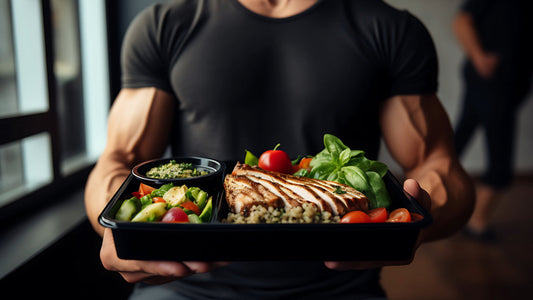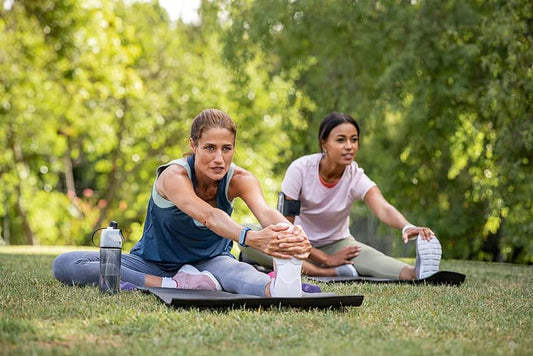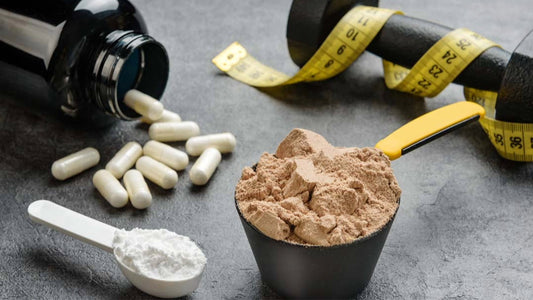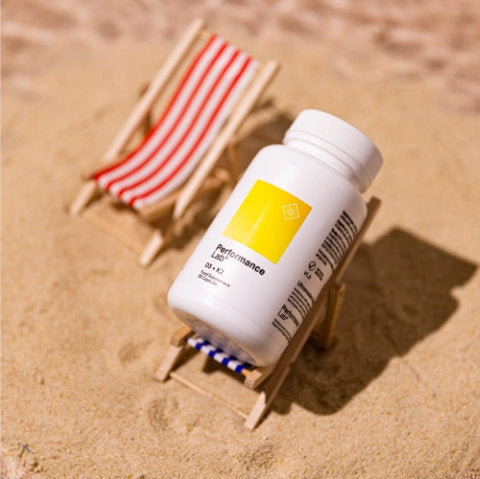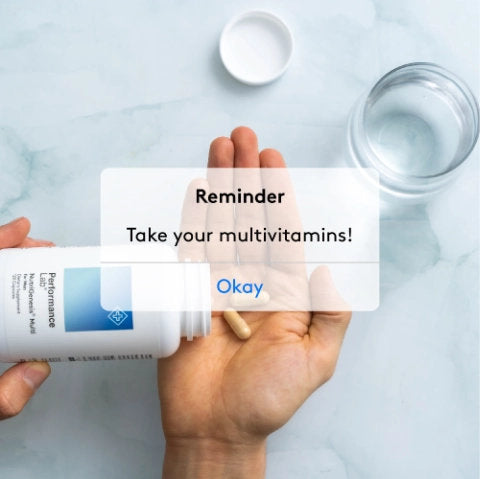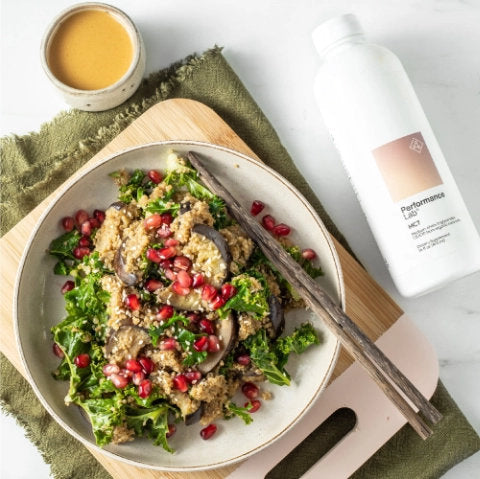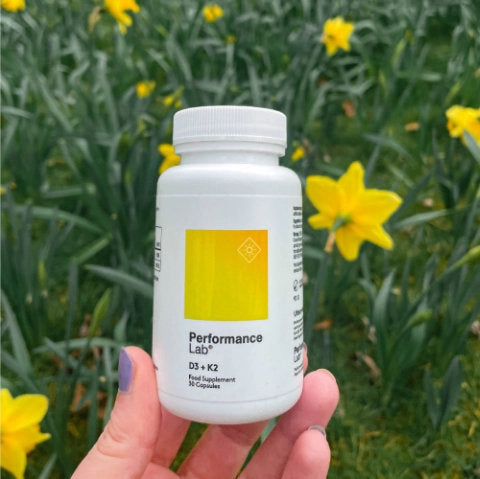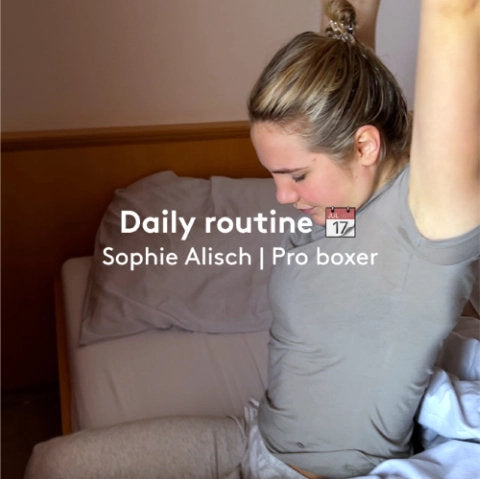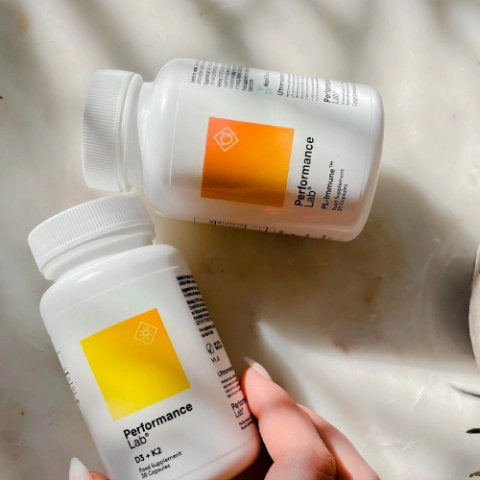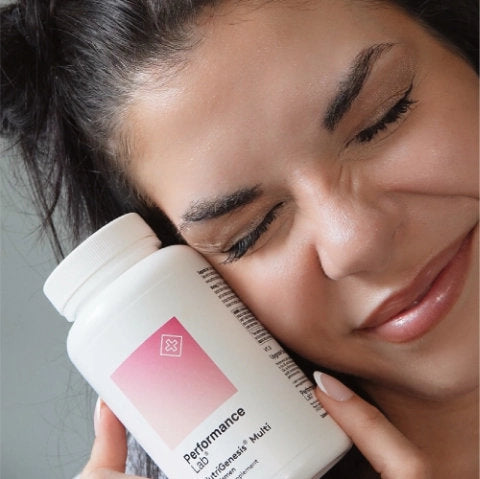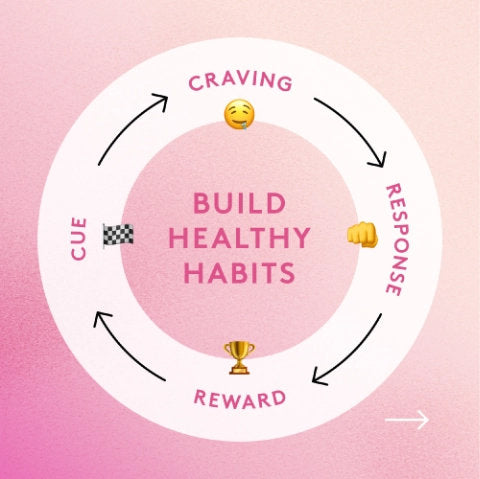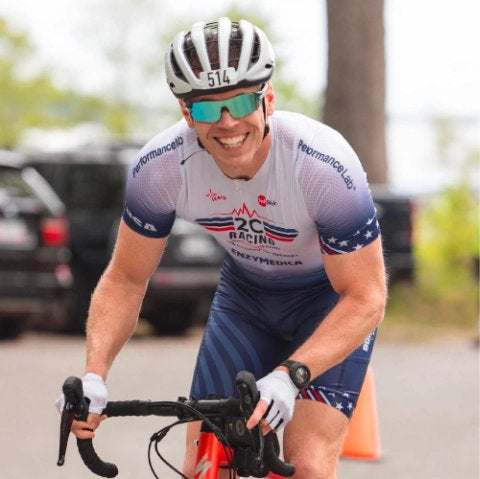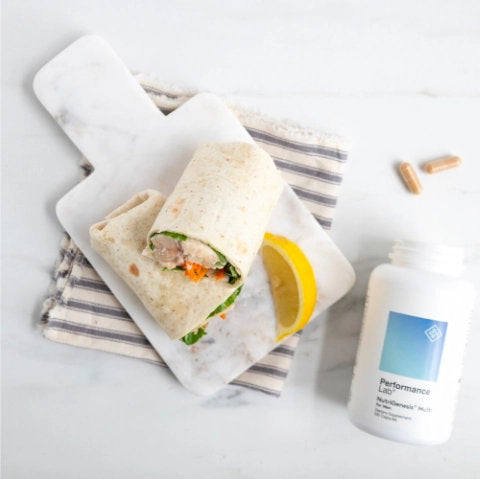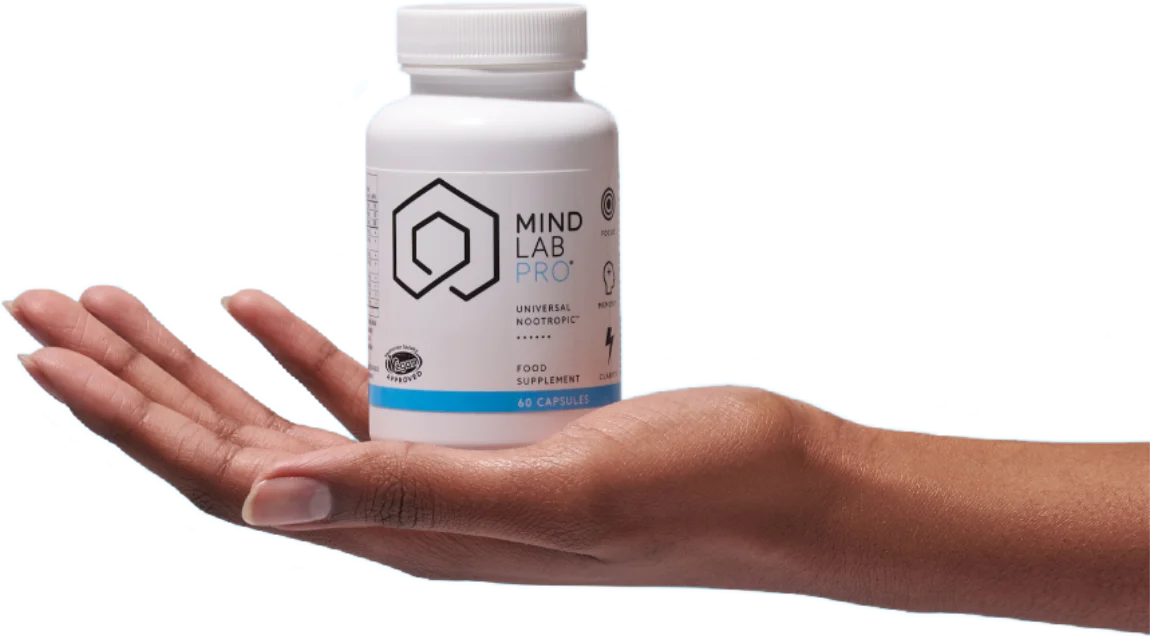Leg day—it speaks for itself.
While for most of us, hitting legs isn't the favorite workout of the week (or even two, maybe three workouts), it gets the job done.
It's generally one of those workouts where you go heavy and push your body to its limits. Your legs are some of the largest muscle groups in the body, and while they can handle high-volume work, it often leads to one thing—soreness.
Unlike sore arms or shoulders that still leave you semi-functional, leg soreness and thigh pain can be gruesome. You struggle to walk, sit, and run, and every little movement seems to cause pain.
If you're someone who constantly experiences leg pain or sore thighs after a workout, kudos to you for hitting it hard—but there are simple ways you can still achieve the same workout without the aftermath.
From proper pre-and post-workout nutrition to supplementation, foam rolling, and contrast therapy, we're giving you a list of tips to help prevent soreness and optimize your recovery.
Let's dig into the details.
"My Legs Are So Sore From Squats I Can't Walk": Key Recovery Takeaways
- Squats cause tiny leg muscle tears that lead to delayed-onset soreness (DOMS), peaking 24–72 hours post-workout. [17]
- Recover faster with 20-35 grams of protein plus carbs, plenty of water, light cardio, and 7–9 hours of sleep and adequate rest to help muscles recover faster. [18, 19]
- Use massage or foam rolling, heat followed by cold, and consider tart cherry juice or omega-3s to help manage inflammation. [9, 10]
- Skip alcohol and limit NSAIDs, as they can potentially slow the healing process. [20, 21, 22]
Why Do You Get Sore Muscles?
Exercise-induced muscle damage (EIMD) is common for people who engage in resistance training. For most people, post leg day soreness happens from new exercises, high-rep body weight squats, or heavier lifts that cause micro trauma to the muscles and tissues, resulting in pain, soreness, inflammation, muscle tightness, muscle fatigue, and impaired function [1].
Although these side effects typically only last a couple of days, they can cause excessive pain and interfere with subsequent athletic performance, especially for people with limited recovery time between training sessions or events.
Most research points to the role of muscle tissue damage in acute and delayed-onset muscle soreness. During heavy resistance training, muscle fibers experience little traumas that must be repaired—this is how muscles grow. However, this damage also triggers an inflammatory response.
The mechanical and metabolic stress linked to EIMD triggers various cell types that comprise skeletal muscle function to initiate subsequent tissue repair and remodeling [2].
These cells include satellite cells (muscle stem cells), inflammatory cells (neutrophils, macrophages, T lymphocytes, mast cells), vascular cells, and stromal cells (fibroblasts) that interact with each other; these interactions dictate the efficacy and time course of muscle recovery.
Acute vs. Delayed-onset Muscle Soreness
When it comes to muscle soreness, there are two primary types: acute or immediate and delayed-onset (DOMS).
Acute muscle soreness usually shows up right as your workout ends. During intense effort, your muscles rely on anaerobic metabolism, which produces lactate and hydrogen ions (not lactic acid). [23]
This buildup, together with other physiological factors that occur during an intense workout, can lower the muscle’s pH. The result? A more acidic environment that contributes to fatigue and reduced muscle contraction.
Acute soreness is the familiar burning “my legs are about to quit” feeling you get in those last reps and right after your leg workout.
On the other hand, delayed-onset muscle soreness (DOMS) typically arises 24-72 hours post-exercise. The exact mechanism behind DOMS isn't clear, but most research suggests it occurs because of microscopic tears in muscle fibers that trigger the inflammatory cascade and, thus pain and discomfort. [24]
For most people, DOMS also leads to muscle strain and impaired athletic performance by causing, a reduced joint range of motion, shock attenuation, and peak torque [3].
In any situation, muscle soreness is never fun—but there are some things you can do to reduce pain and discomfort and facilitate a faster recovery!
Things To Know About Sore Legs
We've all experienced muscle soreness before, but here are some things we want you to know about post-workout muscle pain!
- Not all pain is the same—there is acute muscle soreness (immediate) or delayed-onset muscle soreness (DOMS)
- You can experience both acute muscle soreness and DOMS
- NSAIDs aren't the best solution for muscle-soreness
- Don't completely stop exercising (it can exacerbate muscle soreness!)
- Anti-inflammatory foods are great for reducing soreness [25]
- Try topical arnica—it's helpful for pain relief [26]
- Heat therapy after exercise can be helpful for tight muscles
- Try an Epsom salt bath to facilitate muscle relaxation
- After applying heat, use cold therapy until your muscles are recovered
- Post-workout stretching doesn't appear to be effective in reducing soreness [27]
- Use dynamic stretches before exercise
- Cool down with light cardio
- Stay hydrated and use proper form to help prevent excessive muscle soreness
- While active recovery is important, ensure adequate rest and avoid intense workouts if your legs hurt more than usual or if you notice extreme soreness.
- Severe pain that doesn't go away and comes with other symptoms like fever is a sign to contact your doctor a.s.a.p.
Our Best 13 Tips To Optimize Your Muscle Recovery
We have you covered if you're looking to maximize and accelerate your recovery. We've compiled many of our best tips to help you optimize your recovery and get back into the gym stronger and faster—and we've even categorized them for simplicity!
Food
1. Eat protein post-workout
Amino acids are critical for muscle recovery and are what make up your muscle fibers. When these proteins become damaged, giving your body the raw material needed for repair is essential. Studies show that anywhere from 30 to 40 grams of protein (0.4 to 0.5g/kg or 0.18 to 0.22g/lb) of body weight suffices to maximize muscle growth and repair [4].
2. You could also eat protein pre-workout
Consuming sufficient protein pre-workout can also help to accelerate and facilitate muscle protein synthesis and reduce the need for protein immediately post-workout. [18] As with post-workout intake recommendations, 0.4 to 0.5 g/kg or 0.18 to 0.22g/lb of body weight is effective.
3. Load up on carbs after training
High-intensity exercise drains your body's glycogen (glucose) reserves because your body preferentially uses it for energy. For optimal recovery to occur, these glycogen reserves must be replenished—and carbs do that. [28]
Most experts recommend about 0.5 to 0.7g/lb of body weight. However, if you're training again within a short window, you may need to increase that to about 1.2g/kg of body weight per hour, focusing on high glycemic index (GI) carbs—that's things like white rice, white potatoes, and other fast-digesting carbs with minimal fiber [5].
Keep in mind that research shows that insulin secretion, which promotes glycogen synthesis, is better stimulated when carbs and protein are consumed simultaneously [6, 7, 18, 19].
Bevvies
4. Stay hydrated
Hydration is crucial not only for performance but also for recovery. Studies suggest that eccentric exercise performed in a dehydrated state may exacerbate skeletal muscle damage because of reduced intracellular water, leading to structural, contractile, and enzymatic protein denaturation [8].
These alterations may occur on top of the initial myofiber and connective tissue damage that results from eccentric muscle tension.
The solution? Drink up! Aim for 16 to 24 ounces of fluid for every pound lost during exercise.
5. Drink tart cherry juice
Ever considered tart cherry juice for recovery? Most people haven't, but research shows that thanks to its antioxidant and anti-inflammatory properties, tart cherries may protect against muscle damage and pain during strenuous exercise [9].
One study found that runners who consumed tart cherry juice for seven days prior to and during a strenuous running event had less muscle pain compared to those taking the placebo.
Another study found similar results with cherry juice and symptoms of exercise-induced muscle damage [10]. Strength loss were a whopping 22% for the placebo group and just 4% for the group taking cherry juice over four days after eccentric exercise.
Supplements to Help Ease Sore Muscles
6. Performance Lab NutriGenesis Multi
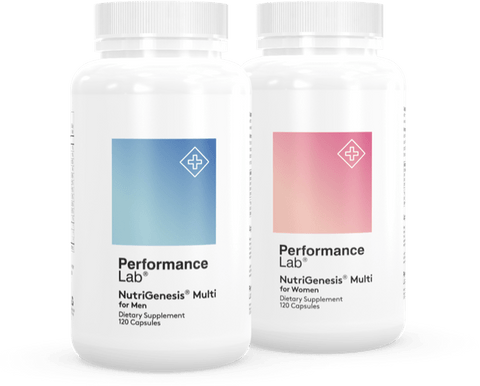
To facilitate a speedy and effective recovery, your body also requires micronutrients; that is, vitamins and minerals besides macronutrients (proteins, carbs, and fat).
While tightening up your diet is a good place to start, nutrient gaps can still happen. And that's where Performance Lab NutriGenesis Multi comes into the picture.
With 100% RDI of 17+ essential vitamins and minerals, NutriGenesis Multi helps to replenish nutrients depleted by intense exercise and stress, and fill in nutrient gaps left by diet. That way, your body has exactly what it needs for optimal growth and recovery—all in one supplement.
Shop Performance Lab® NutriGenesis Multi (Men)
Shop Performance Lab® NutriGenesis Multi (Women)
7. Performance Lab Flex
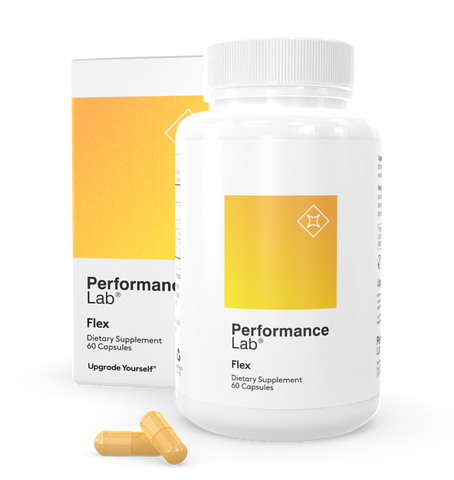
While you may be unable to eliminate exercise-induced muscle and joint pain, there is a way to support healthy and mobile joints: Performance Lab Flex.
Featuring a unique blend of ultramodern joint nutrients, Flex soothes and protects achy joints with easy-on-the-stomach botanicals AprèsFlex® Boswellia serrata and CurcuWIN® curcumin.
Plus, it lubricates and nourishes joints with Phytodroitin™, NutriGenesis® strontium, OptiMSM®, and corn glucosamine. It's the perfect post-workout boost for renewal and recovery immediately after exercise.
8. Performance Lab Omega-3

With powerful anti-inflammatory properties, omega-3s are some of the best supplements to support post-workout repair and recovery.
Studies suggest that omega-3s offer pro-anabolic/anti-catabolic properties in muscle that may help to stimulate muscle protein synthesis, preserve muscle and body composition, improve neuromuscular function and resistance to fatigue, and reduce exercise-induced muscle damage and soreness when taken after exercise.
Plus, you're also getting support for joints and bones. But where Performance Lab Omega-3 differs is in its purity.
Unlike conventional fish oils that are often contaminated and rancid, Omega-3 is ultra-clean, derived from algae to deliver to purest, most potent omega-3 supplement on the market in research-backed doses.
With natural anti-inflammatory properties, omega-3s are some of the best supplements to support post-workout repair and recovery.
Studies, though still inconclusive, suggest that omega-3s offer pro-anabolic/anti-catabolic support in muscle that may help with muscle protein synthesis, preserving muscle and body composition, improving neuromuscular function and resistance to fatigue, and reducing muscle soreness when taken after exercise. [30, 31]
Plus, you're also getting support for joints and bones. But where Performance Lab Omega-3 differs is in its purity.
Unlike some conventional fish oils that may be contaminated and rancid, Omega-3 is derived from algae and third-party tested to deliver our purest, most potent omega-3 supplement in research-backed doses.
Lifestyle
9. Get more sleep, adequate rest
Muscle may be worked in the gym, but it's built during sleep and recovery. Sleep deprivation has an impact on virtually every function in your body, but it can counteract your efforts in the gym.
Lack of sleep can interfere with muscle recovery by impairing your inflammatory reaction, hormone production, and muscle protein synthesis, all of which are essential for muscle growth and recovery [11].
It's during sleep that your body releases growth hormones the most (particularly HGH), which are important for health and fitness.
Ideally, aim for 7-9 hours of good quality, uninterrupted sleep each night. If you struggle with falling asleep or staying asleep, ensure you follow good sleep hygiene techniques.
10. Try massage or foam rolling
Massage and foam rolling are two awesome ways to mitigate and relieve sore muscles. Pressure on adhesions and knots helps to release tension and promote blood flow, which may improve symptoms of DOMS, range of motion, and muscular performance [12].
Just 20 minutes using a foam roller immediately after intense exercise and every 24 hours thereafter may reduce muscle tenderness and impaired joint movement.
Static stretching isn’t the recovery hero it was once thought to be. Experts have noted a lack of strong evidence that doing long, high-intensity static stretches right after a workout offers little benefit for muscle repair. [27]
While stretching can still help maintain flexibility and may improve how much stretch you can comfortably tolerate, it doesn’t necessarily speed recovery. For overall mobility, the American College of Sports Medicine still suggests gentle static stretching 2-3 times per week, but save the deep holds for separate sessions, not immediately after heavy training. [16]
11. Use compression garments
Compression garments have become all the rage with athletes—and there's a good reason for them. They're designed to apply pressure to various tissues and facilitate better recovery. Studies have shown positive results, indicating that compression garments can help to [13]:
- Reduce muscle damage via decreasing creatine kinase (CK) levels
- Reduce pain and inflammation
- Decrease muscle soreness and fatigue
However, the mechanism behind how compression garment aid recovery isn't clear.
12. Contrast water & cold therapy
Heat immediately after exercise and cold thereafter can be incredibly beneficial for relieving sore muscles and facilitating recovery.
Temperature changes, especially when done simultaneously in something like a hot/cold shower, help to stimulate contraction and dilation of blood vessels, which ultimately acts like a pump to move blood around the body, enhance oxygen and nutrient delivery to muscles, reduce inflammation, and improve range of motion [14].
Compared to other recovery methods, contrast water therapy has also been shown to reduce strength losses post-workout.
What To Avoid
13. Alcohol
With all of the beneficial things you can do for muscle recovery, there are some things that can stall it—including alcohol.
Although a glass of red wine here and there is great for antioxidants, consuming alcohol post-workout can slow down the repair process of exercise-induced muscle damage by inhibiting hormonal function needed to support muscle repair. It also interferes with glycogen re-synthesis and muscle protein synthesis [15].
References
- Harty PS, Cottet ML, Malloy JK, Kerksick CM. Nutritional and Supplementation Strategies to Prevent and Attenuate Exercise-Induced Muscle Damage: a Brief Review. Sports Med Open. 2019;5(1):1.
- Peake JM, Neubauer O, Della Gatta PA, Nosaka K. Muscle damage and inflammation during recovery from exercise. J Appl Physiol (1985). 2017;122(3):559-570.
- Cheung K, Hume P, Maxwell L. Delayed onset muscle soreness: treatment strategies and performance factors. Sports Med. 2003;33(2):145-164.
- Aragon AA, Schoenfeld BJ. Nutrient timing revisited: is there a post-exercise anabolic window?. J Int Soc Sports Nutr. 2013;10(1):5.
- Kerksick C, Harvey T, Stout J, et al. International Society of Sports Nutrition position stand: nutrient timing . J Int Soc Sports Nutr. 2008;5:17.
- Ivy JL. Glycogen resynthesis after exercise: effect of carbohydrate intake. Int J Sports Med. 1998;19 Suppl 2:S142-S145.
- Biolo G, Williams BD, Fleming RY, Wolfe RR. Insulin action on muscle protein kinetics and amino acid transport during recovery after resistance exercise. 1999;48(5):949-957.
- Cleary MA, Sitler MR, Kendrick ZV. Dehydration and symptoms of delayed-onset muscle soreness in normothermic men. J Athl Train. 2006;41(1):36-45.
- Kuehl KS, Perrier ET, Elliot DL, Chesnutt JC. Efficacy of tart cherry juice in reducing muscle pain during running: a randomized controlled trial. J Int Soc Sports Nutr. 2010;7:17.
- Connolly DA, McHugh MP, Padilla-Zakour OI, Carlson L, Sayers SP. Efficacy of a tart cherry juice blend in preventing the symptoms of muscle damage. Br J Sports Med. 2006;40(8):679-683.
- Yang DF, Shen YL, Wu C, et al. Sleep deprivation reduces the recovery of muscle injury induced by high-intensity exercise in a mouse model. Life Sci. 2019;235:116835.
- Pearcey GE, Bradbury-Squires DJ, Kawamoto JE, Drinkwater EJ, Behm DG, Button DC. Foam rolling for delayed-onset muscle soreness and recovery of dynamic performance measures. J Athl Train. 2015;50(1):5-13.
- Pérez-Soriano P, García-Roig Á, Sanchis-Sanchis R, Aparicio I. Influence of compression sportswear on recovery and performance: A systematic review. Journal of Industrial Textiles. 2019; 48(9):1505-1524.
- Bieuzen F, Bleakley CM, Costello JT. Contrast water therapy and exercise induced muscle damage: a systematic review and meta-analysis. PLoS One. 2013;8(4):e62356.
- Vella LD, Cameron-Smith D. Alcohol, athletic performance and recovery. Nutrients. 2010;2(8):781-789.
- Page P. Current concepts in muscle stretching for exercise and rehabilitation. Int J Sports Phys Ther. 2012;7(1):109-119.
- Stožer A, Vodopivc P, Križančić Bombek L. Pathophysiology of exercise-induced muscle damage and its structural, functional, metabolic, and clinical consequences. Physiol Res. 2020;69(4):565-598. doi:10.33549/physiolres.934371
- Cintineo HP, Arent MA, Antonio J, Arent SM. Effects of Protein Supplementation on Performance and Recovery in Resistance and Endurance Training. Front Nutr. 2018;5:83. Published 2018 Sep 11. doi:10.3389/fnut.2018.00083
- Margolis LM, Allen JT, Hatch-McChesney A, Pasiakos SM. Coingestion of Carbohydrate and Protein on Muscle Glycogen Synthesis after Exercise: A Meta-analysis. Med Sci Sports Exerc. 2021;53(2):384-393. doi:10.1249/MSS.0000000000002476
- Caceres-Ayala C, Pautassi RM, Acuña MJ, Cerpa W, Rebolledo DL. The functional and molecular effects of problematic alcohol consumption on skeletal muscle: a focus on athletic performance. Am J Drug Alcohol Abuse. 2022;48(2):133-147. doi:10.1080/00952990.2022.2041025
- Lundberg TR, Howatson G. Analgesic and anti-inflammatory drugs in sports: Implications for exercise performance and training adaptations. Scand J Med Sci Sports. 2018;28(11):2252-2262. doi:10.1111/sms.13275
- Liao CH, Lin LP, Yu TY, Hsu CC, Pang JS, Tsai WC. Ibuprofen inhibited migration of skeletal muscle cells in association with downregulation of p130cas and CrkII expressions. Skelet Muscle. 2019;9(1):23. Published 2019 Aug 29. doi:10.1186/s13395-019-0208-z
- Sahlin K. Muscle energetics during explosive activities and potential effects of nutrition and training. Sports Med. 2014;44 Suppl 2(Suppl 2):S167-S173. doi:10.1007/s40279-014-0256-9
- Stožer A, Vodopivc P, Križančić Bombek L. Pathophysiology of exercise-induced muscle damage and its structural, functional, metabolic, and clinical consequences. Physiol Res. 2020;69(4):565-598. doi:10.33549/physiolres.934371
- Wang L, Meng Q, Su CH. From Food Supplements to Functional Foods: Emerging Perspectives on Post-Exercise Recovery Nutrition. Nutrients. 2024;16(23):4081. Published 2024 Nov 27. doi:10.3390/nu16234081
- Smith AG, Miles VN, Holmes DT, Chen X, Lei W. Clinical Trials, Potential Mechanisms, and Adverse Effects of Arnica as an Adjunct Medication for Pain Management. Medicines (Basel). 2021;8(10):58. Published 2021 Oct 9. doi:10.3390/medicines8100058
- Afonso J, Clemente FM, Nakamura FY, et al. The Effectiveness of Post-exercise Stretching in Short-Term and Delayed Recovery of Strength, Range of Motion and Delayed Onset Muscle Soreness: A Systematic Review and Meta-Analysis of Randomized Controlled Trials. Front Physiol. 2021;12:677581. Published 2021 May 5. doi:10.3389/fphys.2021.677581
- Ivy JL. Regulation of muscle glycogen repletion, muscle protein synthesis and repair following exercise. J Sports Sci Med. 2004;3(3):131-138. Published 2004 Sep 1.
- Johns Hopkins Medicine. Sports and hydration for athletes. Johns Hopkins Medicine website. Published n.d. Accessed September 26, 2025. https://www.hopkinsmedicine.org/health/wellness-and-prevention/nutrition-and-fitness/sports-and-hydration-for-athletes
- Fernández-Lázaro D, Arribalzaga S, Gutiérrez-Abejón E, Azarbayjani MA, Mielgo-Ayuso J, Roche E. Omega-3 Fatty Acid Supplementation on Post-Exercise Inflammation, Muscle Damage, Oxidative Response, and Sports Performance in Physically Healthy Adults—A Systematic Review of Randomized Controlled Trials. Nutrients. 2024;16(13):2044. Published 2024 Jun 27. doi:10.3390/nu16132044
- McGlory C, Calder PC, Nunes EA. The Influence of Omega-3 Fatty Acids on Skeletal Muscle Protein Turnover in Health, Disuse, and Disease. Front Nutr. 2019;6:144. Published 2019 Sep 6. doi:10.3389/fnut.2019.00144



